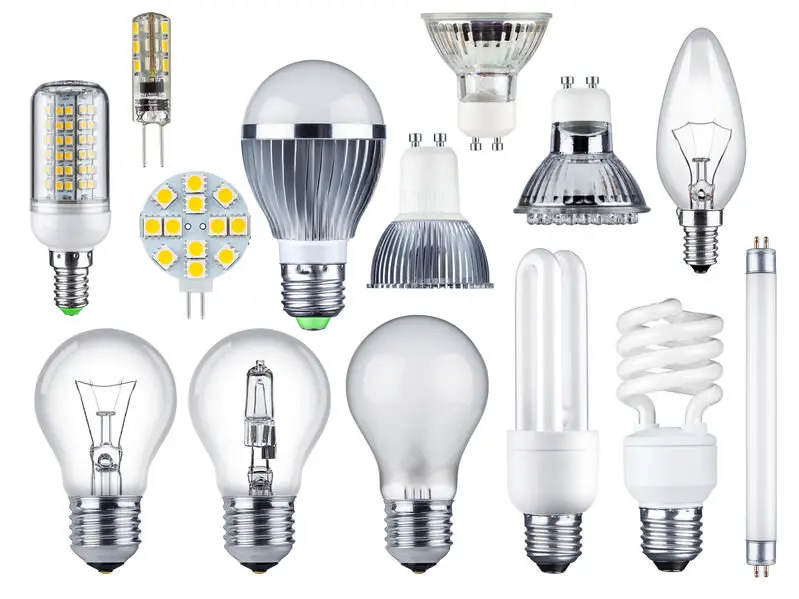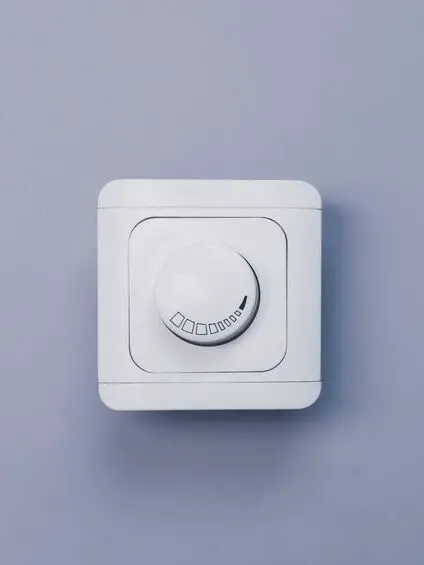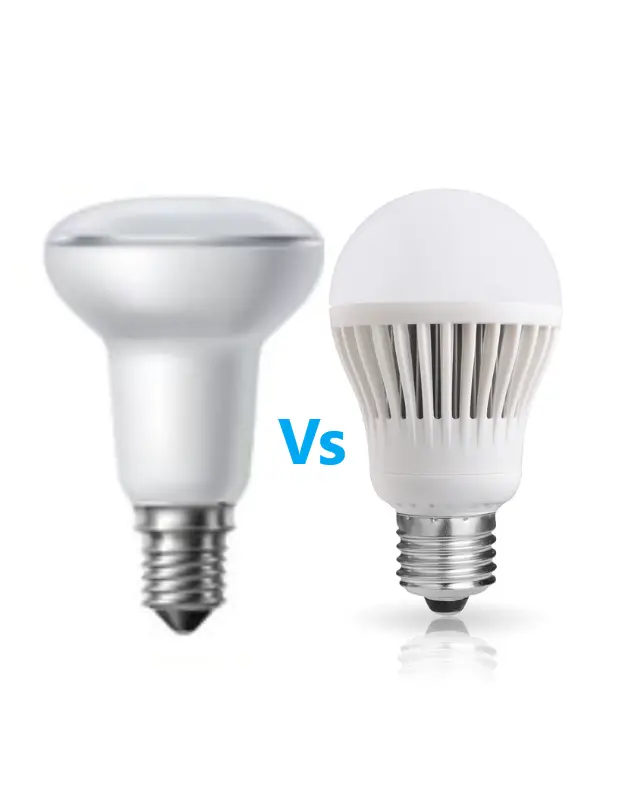How Incandescent Bulbs Are Inefficient
You might have heard in the past that regular incandescent light bulbs are inefficient. The biggest reason for this is the fact that it wastes a lot of energy creating excess heat instead of light.
Incandescent light bulbs are not very efficient due to about 95% of the inputted energy is lost as heat generation and only the remaining 5% produces actual visible light. Incandescent bulbs are also inefficient due to their short lifespan, which causes upkeep costs to increase.
Incandescent Bulbs Waste Energy In Heat
As we mentioned previously incandescent bulbs waste a large amount of energy creating heat rather than the preferred output of light. This is primarily due to the way that they are constructed and the way that it produces light to begin with.
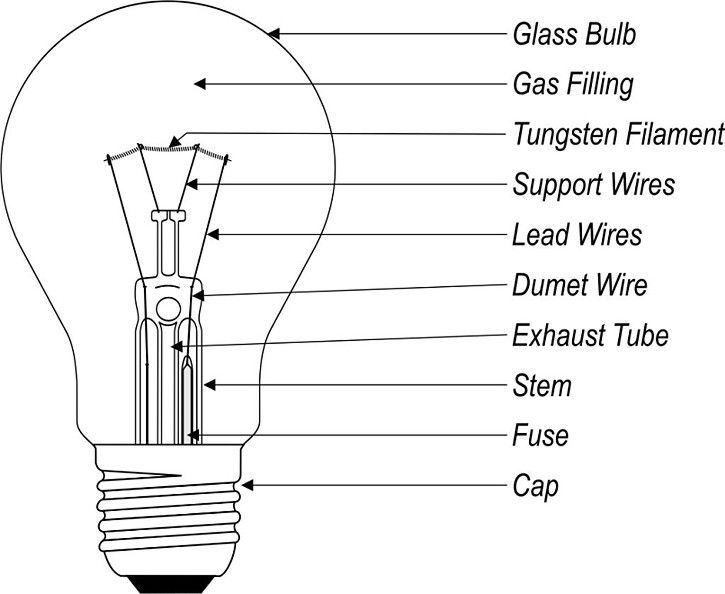
The way a light bulb function is actually rather simple. Once put into a socket and turned on, there will be electrons flowing through the lead wires and through the tungsten filament.
If you are interested in knowing why tungsten is the material of choice for this, you can check out our article on it here.
What then happens is that the tungsten filament will begin to heat up and start to glow, which in turn causes it to produce light. This is the very definition of something being incandescent.
However, the problem with its energy inefficiency is created from the sheer concept that makes these bulbs work, to begin with, and that is the excess heat they produce.
The incandescent light bulb was created in 1879, which is a point in history where technology hasn’t advanced nearly as far as it has today. This also means that being energy efficient was not nearly as important as it is today.
This brings us to how much energy they actually waste. An incandescent light bulb’s energy input gets outputted in 2 different ways. These two different ways are through heat and visible light.
About 95% of the inputted energy goes towards creating heat whereas only 5% goes towards making visible light.
In more technical terms this means that the bulb has an efficiency of about 5%, which in today’s standards are really low. Most modern light sources today, such as LEDs, can reach efficiencies of about 95%.
This is because today we are able to cut down immensely on the heat output and maximize the visible light output. This is done by using electronical components that produce light instead of something that incandesces.
These different energy outputs are very similar by nature because they are technically both thermal radiation. The only difference is that visible light is a range of wavelengths within the thermal radiation spectrum where we can see it with our naked eyes.
The heat generation that the bulb produces is mostly in fact infrared light or IR. This also happens to all light sources that emit light through something burning, for example, the sun or a fire.
Incandescent Bulbs Have a Short Lifespan
Another prominent aspect of incandescent light bulbs that makes them inefficient is their relatively short lifespan.
An incandescent light bulb will burn for about 1000 hours before needing replacement. 1000 hours is about 1.5 months’ worth of time, meaning you will need about 9 a year in order to keep an area lit up 24/7 using these bulbs.
For the time they came out this was revolutionary, but by today’s standards, it simply gets outclassed by more modern inventions.
However, there were attempts to upgrade the bulb to make it last longer and be more energy efficient. This caused the halogen bulb to be created.
Halogen bulbs use the exact same principle for light as an incandescent bulb does, the main difference between them being the addition of halogen that makes it last another thousand hours. That makes the lifespan for a halogen bulb around 2000 hours long.
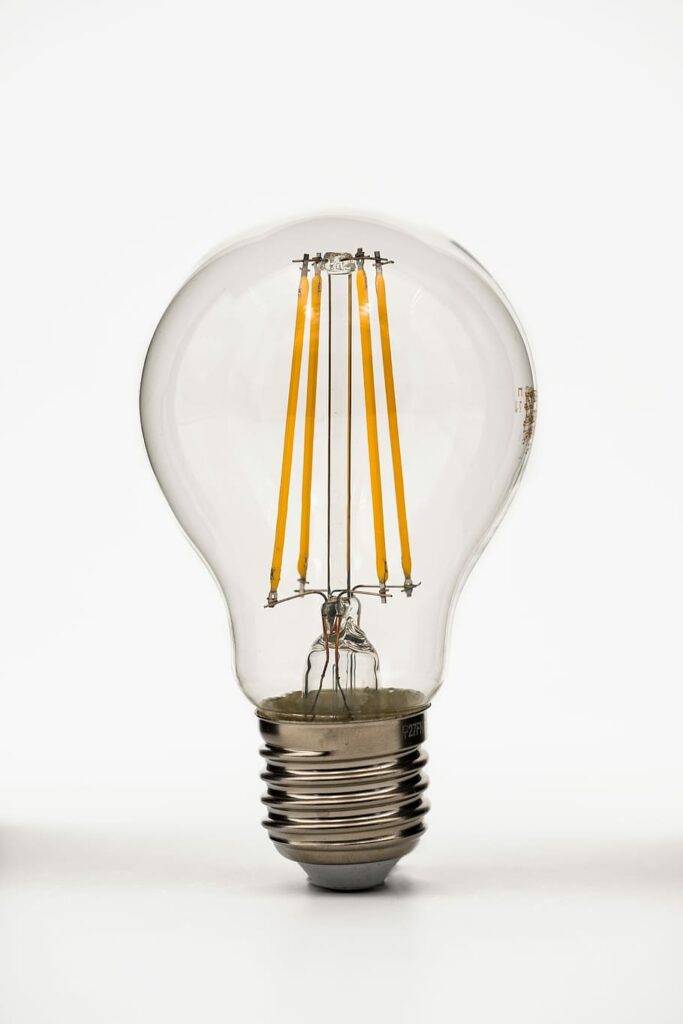
However 2000 hours isn’t very impressive nowadays either in comparison to the most modern light source, the LED. An LED bulb is able to last at least 50 000 hours and also has the added benefit of being more energy efficient than other alternatives.
In fact, LEDs are able to push even greater lengths than 50 000h. Some are able to go to 100 000 hours and some even further than that.
The reason why we can’t put an end time to it is that we simply haven’t reached it yet, since testing something for over 100 000 hours would take more than 10 years in real-time.
If you are interested further in the lifespan of LEDs, feel free to check out our article on it here.
Comparing Incandescent Bulbs To Other Bulbs
We have now discussed some of the flaws of incandescent bulbs, but how do they actually stack up against other common bulbs in terms of efficiency?
For this, there are a couple of different metrics to consider. The metrics we will focus on here are:
- Luminous Efficacy (lm/W)
- Lifespan (h)
- Life cycle cost over 100 000h
Luminous efficacy for light is how many lumens (lm) it produces per watts (W) of energy inputted. Lumens is simply a quantified amount of light, which makes it so we can compare different bulbs to the same amount of light outputted.
With these metrics, we can mathematically compare how incandescent light matches up with other bulbs, which for this calculation we will compare to halogen, fluorescent and LED bulbs.
| LED | Halogen | Fluorescent | Incandescent | |
|---|---|---|---|---|
| Light bulb projected lifespan | 25,000 hours | 5000 hours | 12,000 hours | 1000 hours |
| Luminous efficacy | 80-200 lm/W | 20-36 lm/W | 50-70 lm/W | 10-12 lm/W |
| Watts per bulb (equiv. 60 watts) | 13W | 43W | 15W | 60W |
| Cost per bulb | $5 | $2 | $2.5 | $1 |
| kWh of electricity used over 100,000 hours | ~1300 kWh | ~4300 kWh | ~1500 kWh | ~6000 kWh |
| Cost of electricity (@ 0.10 per KWh) | $130 | $430 | $150 | $600 |
| Bulbs needed for 100 000 hours of use | 4 | 20 | 8-9 | 100 |
| Total cost for 100 000 hours | $150 | $470 | $170 | $700 |
With these calculations done, we can see how incandescent bulbs fall behind the other options by quite a bit.
Its luminous efficacy of incandescent bulbs is far below the other bulbs and therefore costs a lot more to run for the same amount of light output.
Over the course of 100,000 hours, LED light bulbs would cost less than 25% of the cost of incandescent lighting would. This percentage becomes even smaller as time goes on.
It is also worth noting that this number is only measuring one singular light bulb. The costs would expand a lot if more bulbs would be added to the equation.
Phasing Out Incandescent Bulbs
Because of the inefficiencies mentioned above, there have been decisions made by most countries in the world to begin phasing these bulbs out in order to implement the more energy-efficient options of today.
In the United States the federal government introduced the “Energy Independence and Security Act of 2007”, which is an energy policy that had a primary effect of stopping the usage of these inefficient bulbs.
In the EU it was also made clear to phase these bulbs out starting from 2007, with the end goal being to totally phase the bulbs out by 2012. While not all countries in Europe are a part of the EU, most of them are using the same directive as the EU.
In fact, most of the world ended up taking the same path to eliminate incandescent bulbs as the EU and the US.
The way that phasing these bulbs out is intended is to simply stop their production of them and let the already existing ones be sold and used so that they don’t go to waste.
This means that at one point they would run out because of the production stopping and that they can be replaced by more energy-efficient options.
So does this mean that incandescent bulbs are bad? Not necessarily. They were an astonishing invention and one of the most important ones of modern times.
However, with time more efficient solutions have come around for efficient light sources and this invention has simply become a bit outdated.
Is there still a place for it in modern society? Yes, but not in a lot of places. The most prominent place it has is within the industry, where you need something reliable and where light maintenance isn’t an issue.
Despite this though, it is in general a positive thing for the bulb to phase out since the more energy-efficient options will be a whole lot better for the environment as a whole.
Summary
To summarize, here are the main takeaways from this article:
- Incandescent light bulbs are inefficient due to their inability to turn energy into a significant amount of visible light. It only converts 5% of it to visible light.
- The lifespan of incandescent bulbs is rather short compared to other available bulbs.
- Due to these reasons, most of the world has elected to start phasing out these bulbs in order to meet new energy standards.

